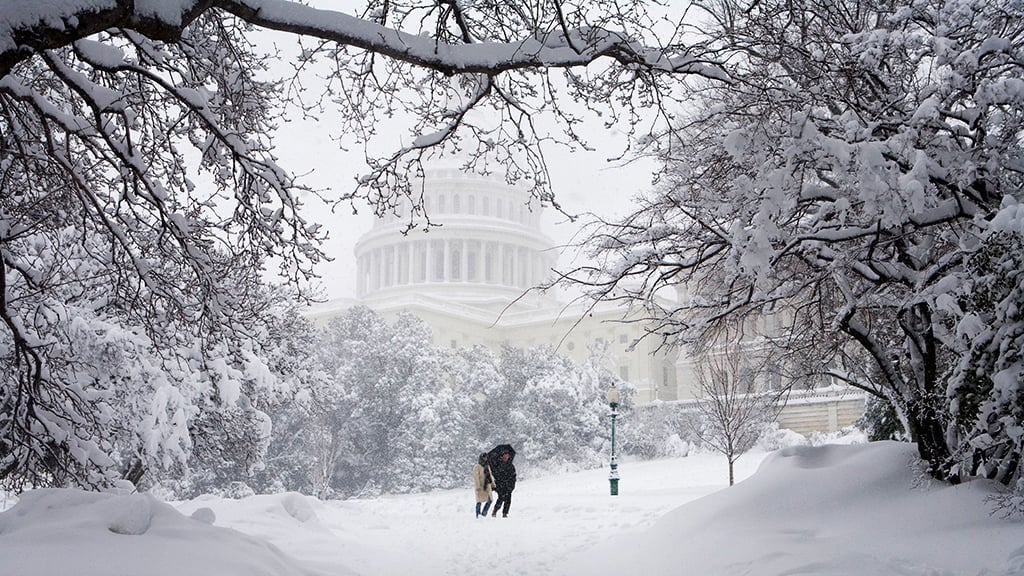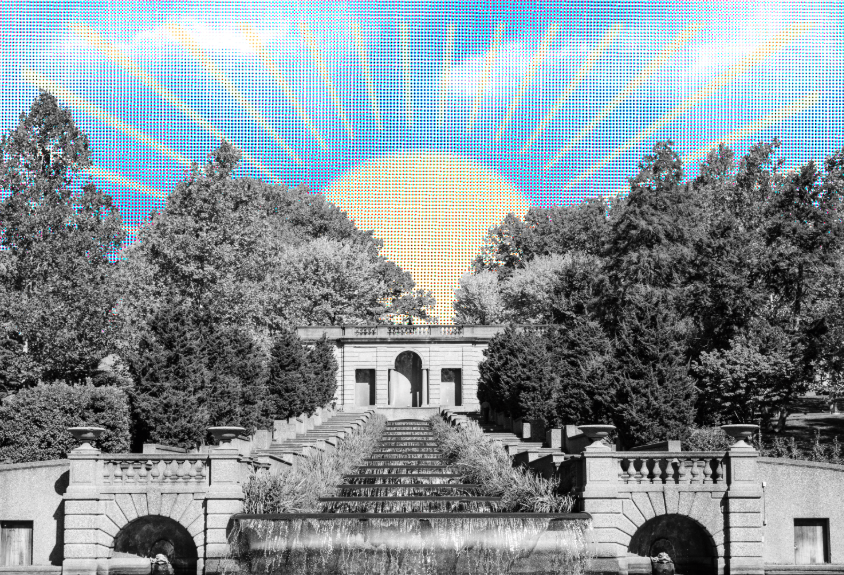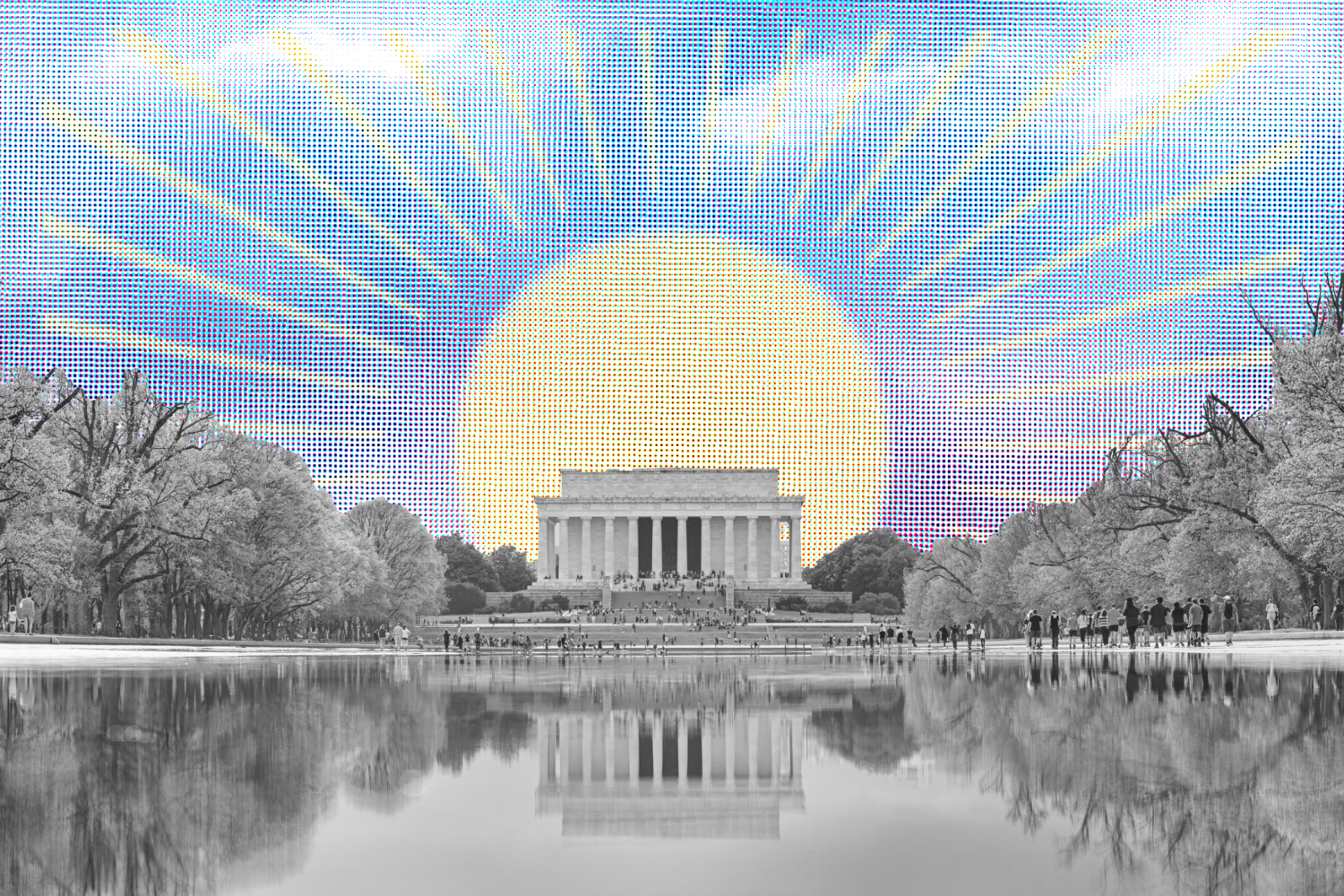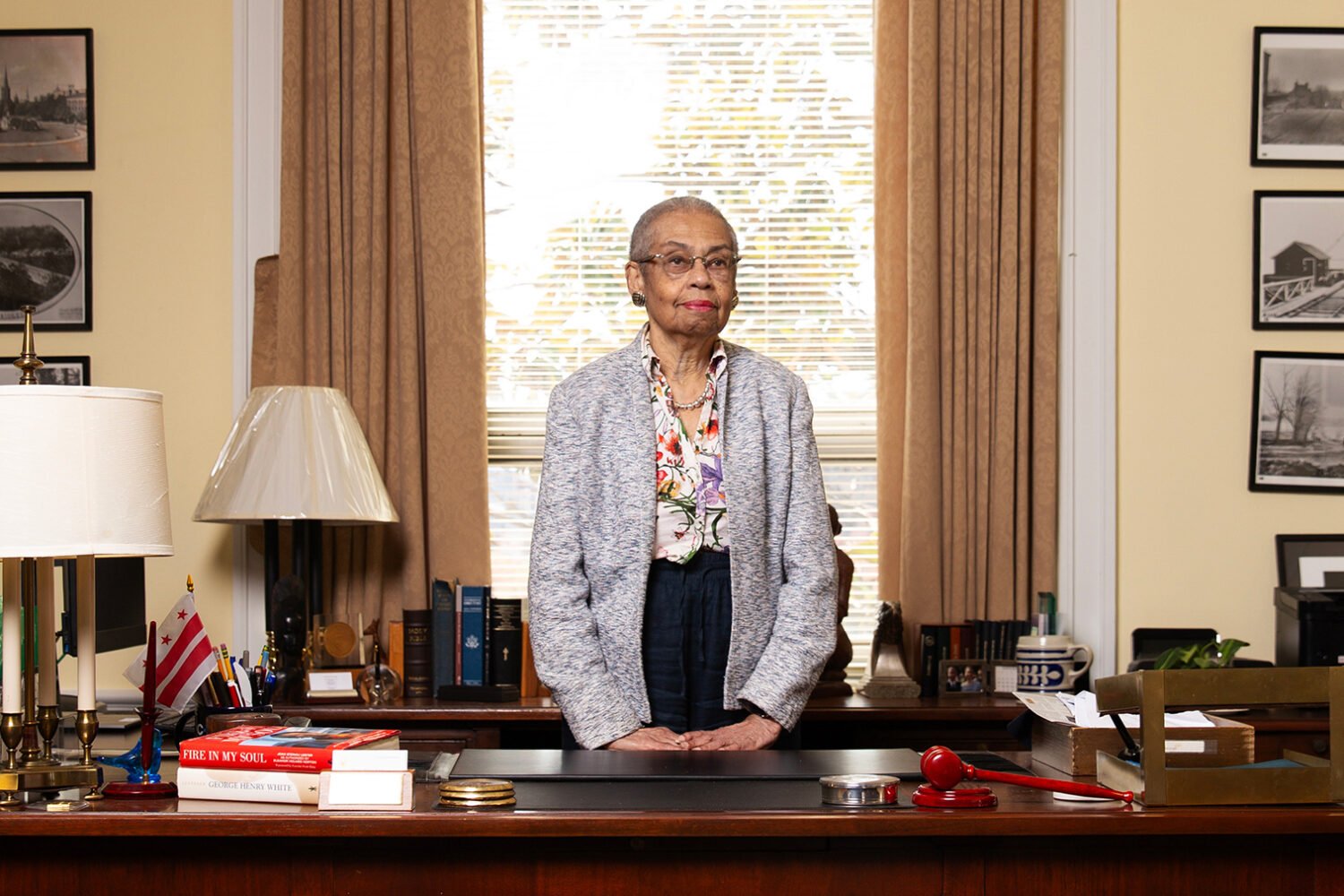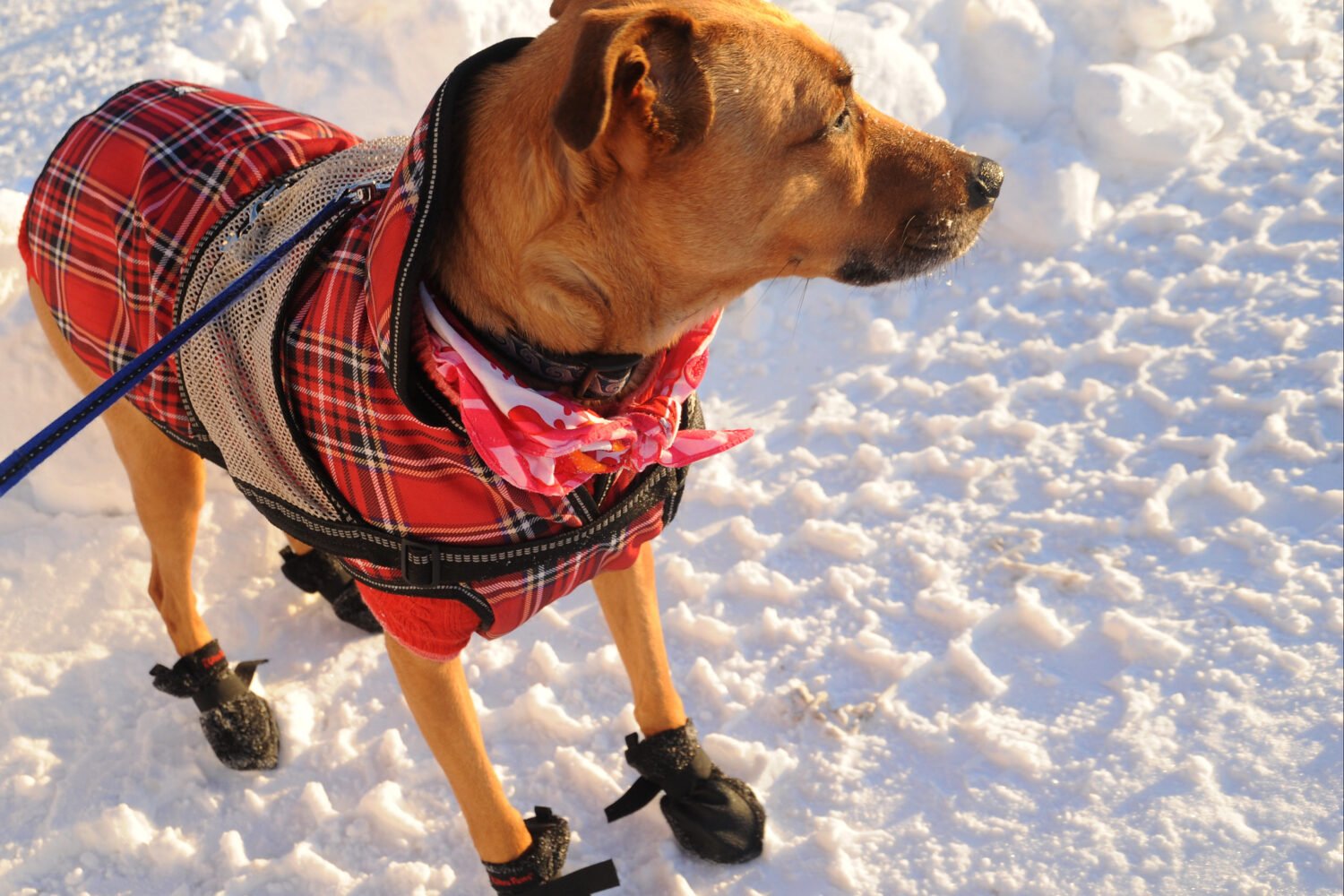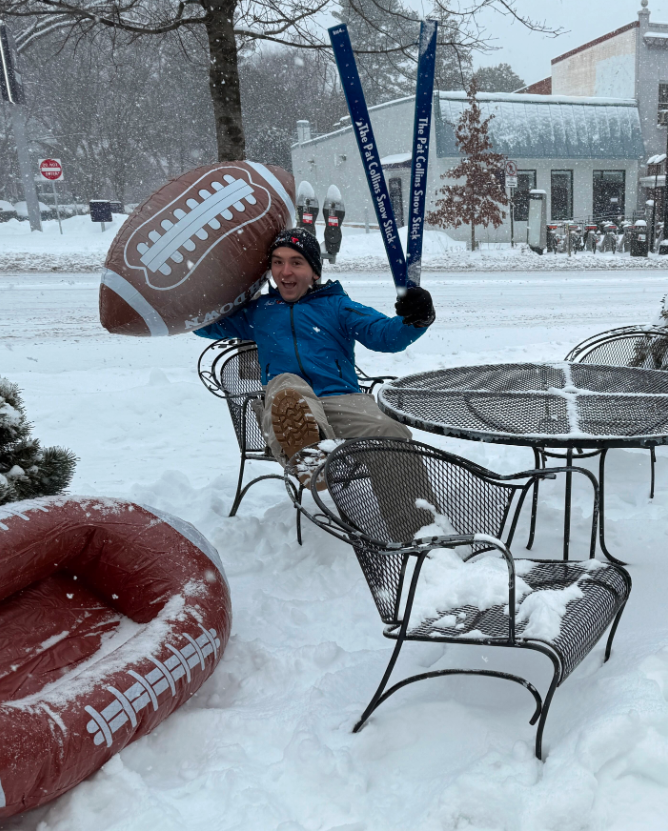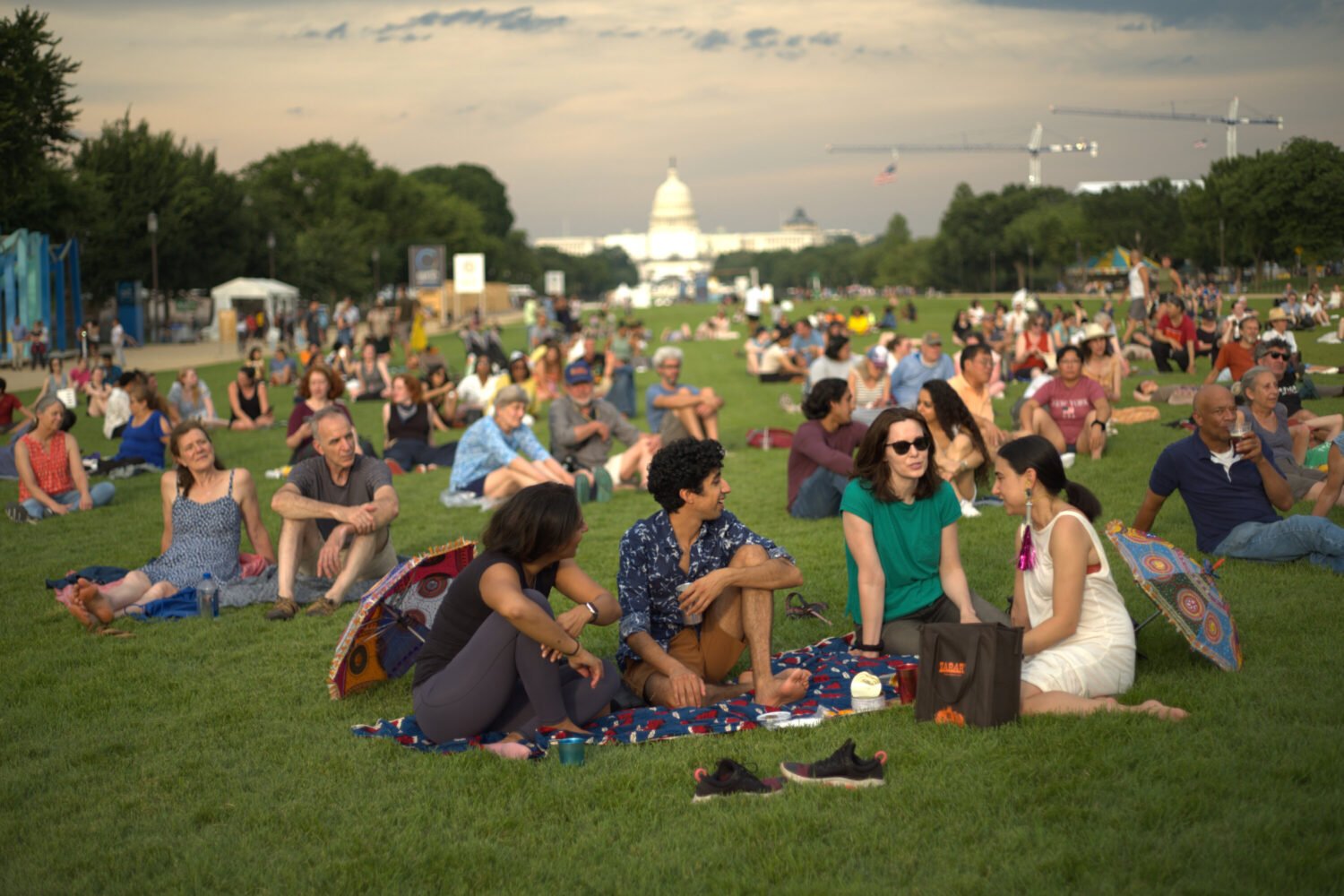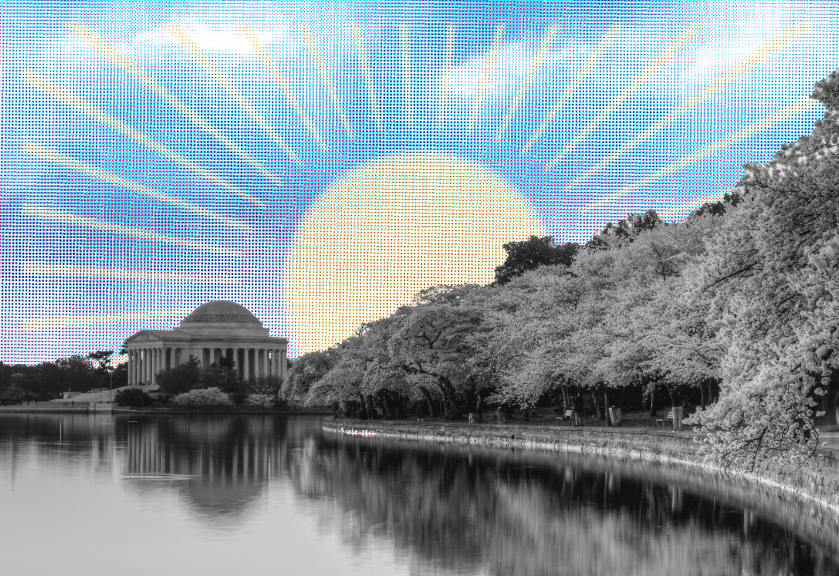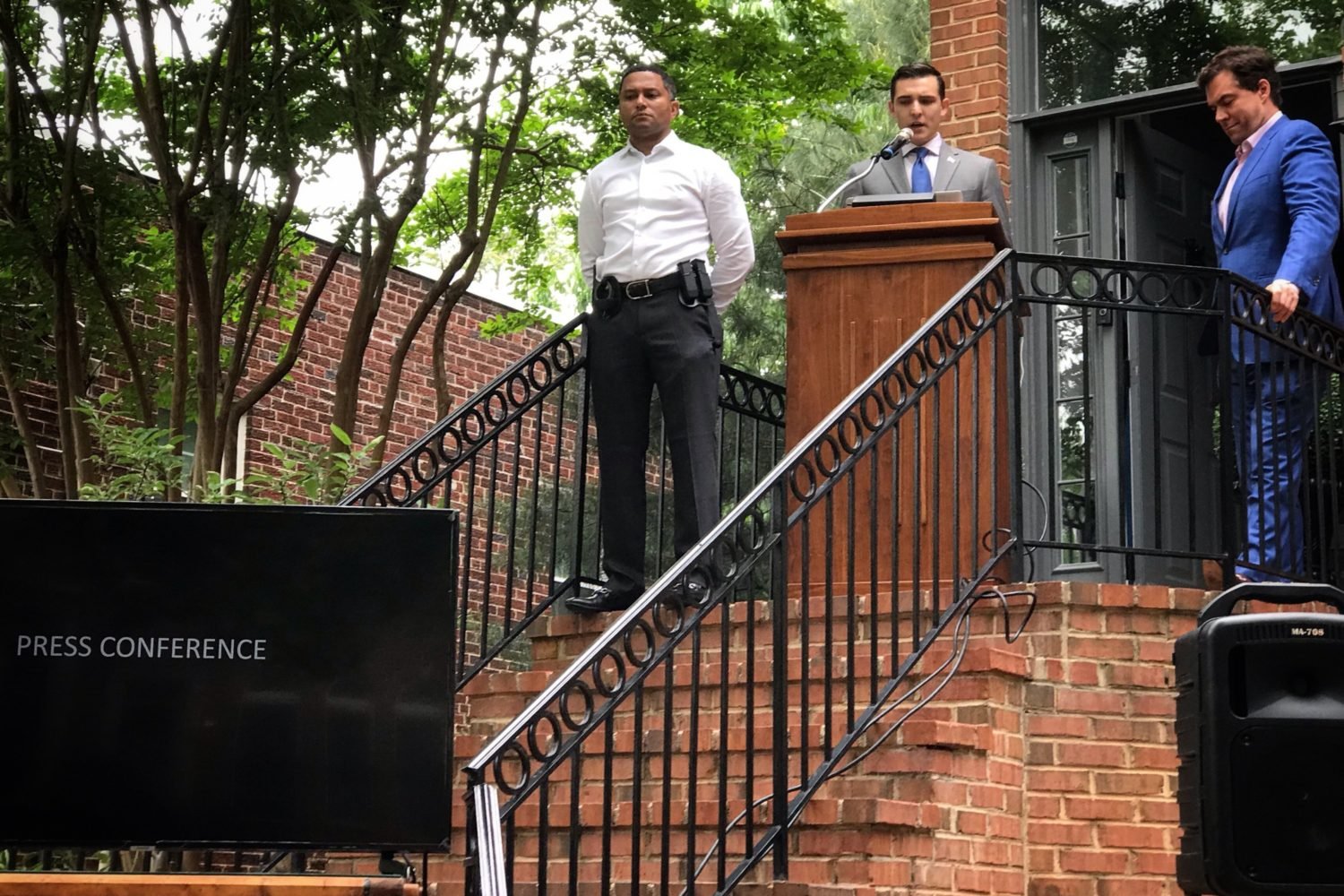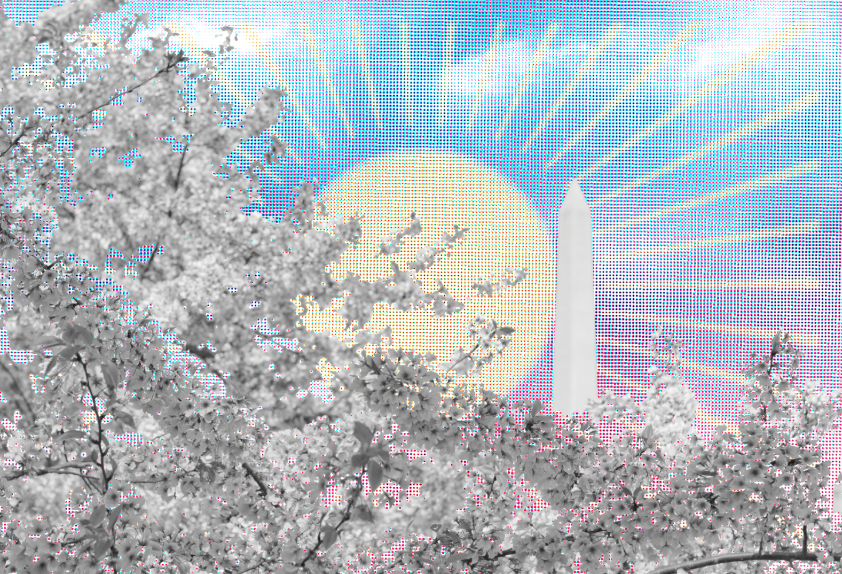1. The Storm That Saved Washington
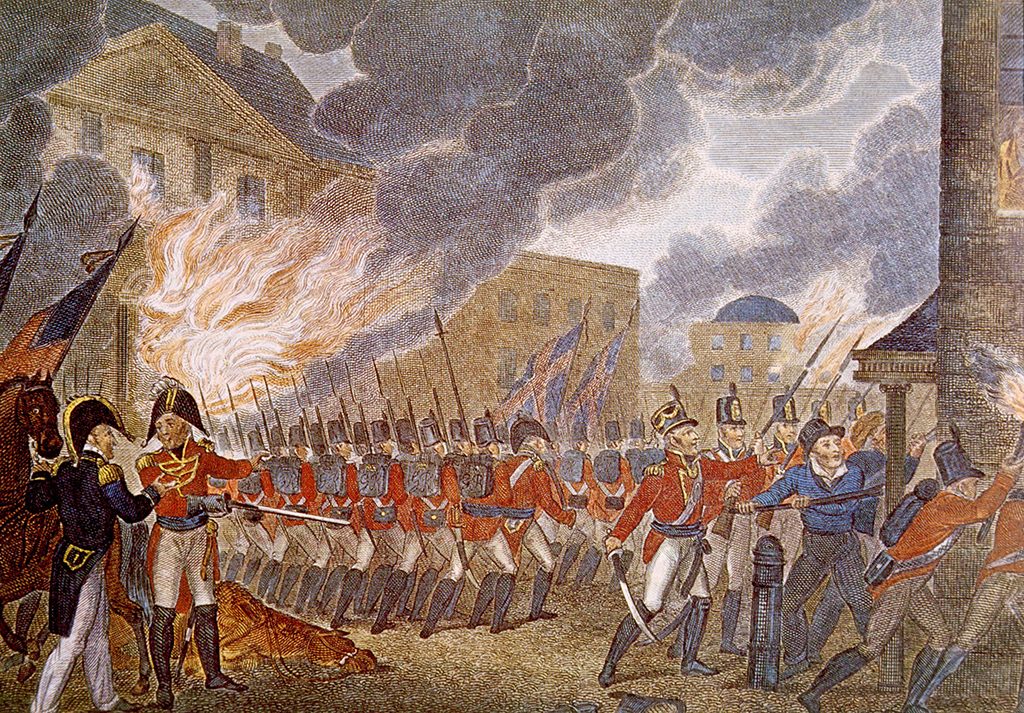
In the vicious 100-degree heat of August 25, 1814, the invading British Army set fire to Washington. As the sky darkened, local residents knew what was coming; the invaders did not. Soon, torrential rain squelched the worst of the flames, and a small tornado, forming at the city’s center, tore through the soaked British forces on Capitol Hill. Washingtonians claimed that heaven had intervened.
2. The Ash Wednesday Storm
A March 1962 storm flooded Ocean City and nearly washed away Assateague Island and its famous ponies. “Big D,” a $1.5-million rig built to dig Virginia’s Chesapeake Bay Bridge–Tunnel, was trashed. Misty, the wild pony of literature, who spent the night in her owners’ kitchen, soon gave birth to her foal, Stormy.
3. Snowpocalypse
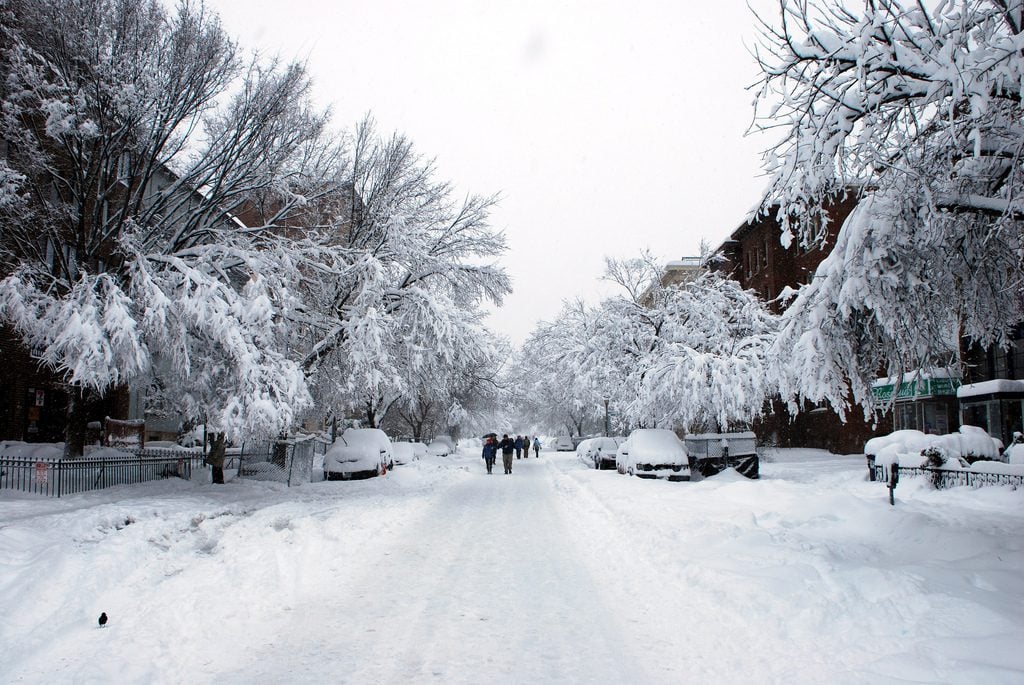
The record snowfall that descended in mid-December 2009 thrilled kids and those who’d done their holiday shopping early, but canceled flights and enforced holiday family fun led many to dub our white Christmas “Snowpocalpyse”—not to be confused with early 2010’s “Snowmageddon,” which plastered us with up to 32 inches.
4. President Reagan’s Microburst Near Miss
Dangerous microbursts—caused by pockets of cold air exploding violently on the ground—can be more powerful than a tornado. On August 1, 1983, within minutes of an Air Force One landing with Ronald Reagan onboard, the most severe burst on record at the time struck Andrews Air Force Base with gusts of 149 mph, knocking down trees and tearing roofs from hangars.
5. The Great Arctic Outbreak
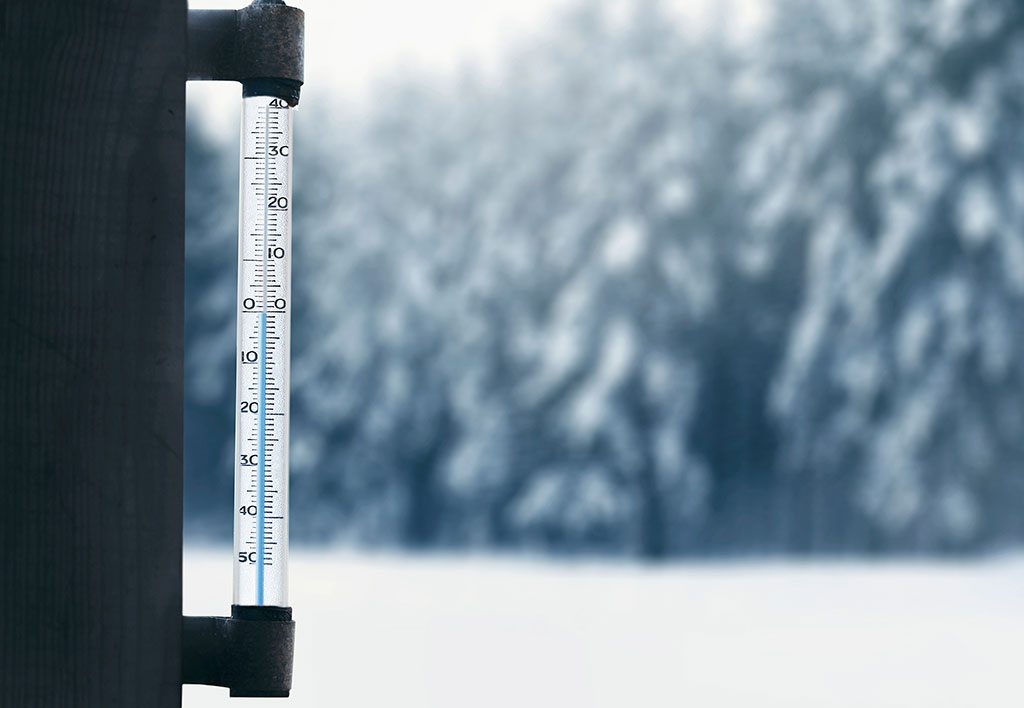
For three days in February 1899, temperatures stayed below zero, hitting minus 15 on the 11th. The Evening Star pleaded for the mercury to “come from its hiding place in the bottom of the bulb.” Days later, a snowstorm paralyzed Georgetown.
6. The Derecho
The most dramatic effects of the summer 2012 storm known as a derecho may have been at Wolf Trap, which was plunged into darkness amid the second act of the opera Don Giovanni. Felt in ten states, the derecho blew into our region with particular ferocity, coming on the hottest June day in more than a century.
7. The Chesapeake Potomac Hurricane
The Potomac and Anacostia rivers broke their banks in this 1933 cataclysm, flooding Alexandria’s Torpedo Factory and derailing a train as it crossed the Anacostia. That wreck accounted for more than half of the storm’s casualties in the region.
8. The Washington and Jefferson Snowstorm
An avid weather watcher, George Washington recorded three feet of white in a January 1772 blizzard. A hundred miles away at Monticello, Thomas Jefferson, returning from his wedding, marveled at “the deepest snow we have ever seen.”
9. The Knickerbocker Storm
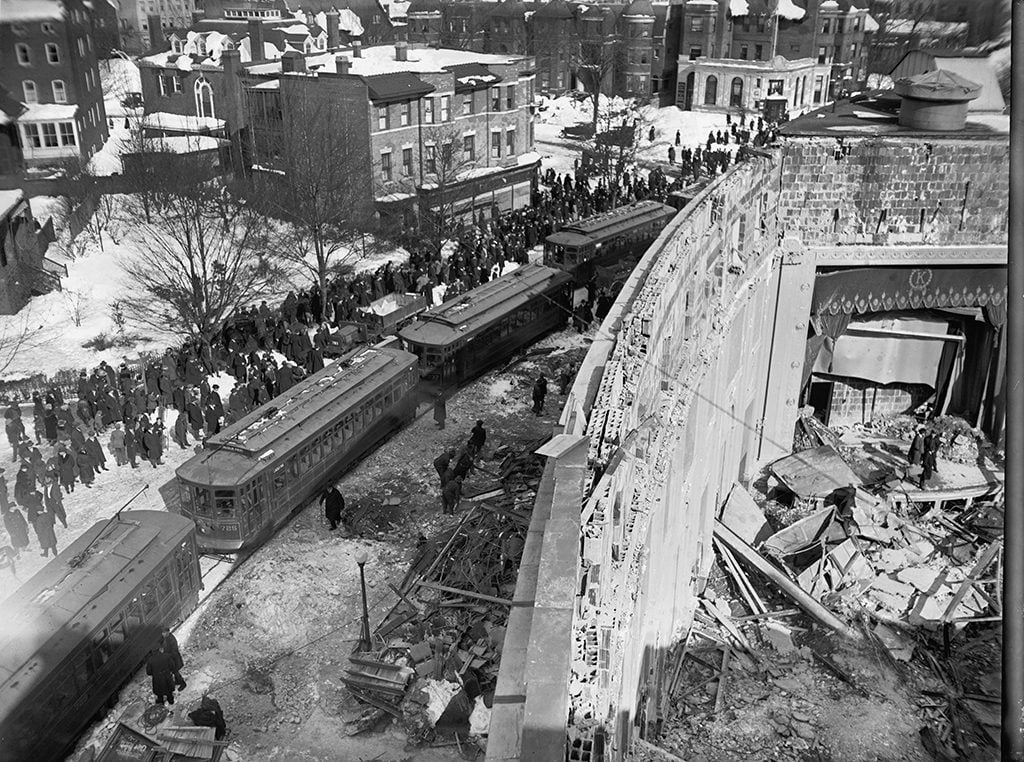
On January 28, 1922, several hundred people braved a record snowfall to see the silent film Get-Rich-Quick Wallingford at the Knickerbocker Theater at 18th Street and Columbia Road, Northwest. Shortly after 9, as intermission ended, the roof collapsed under nearly 2½ feet of snow. Ninetyeight people were killed and 133 were injured in one of DC’s worst storm-related disasters.
10. The Virginia Earthquake
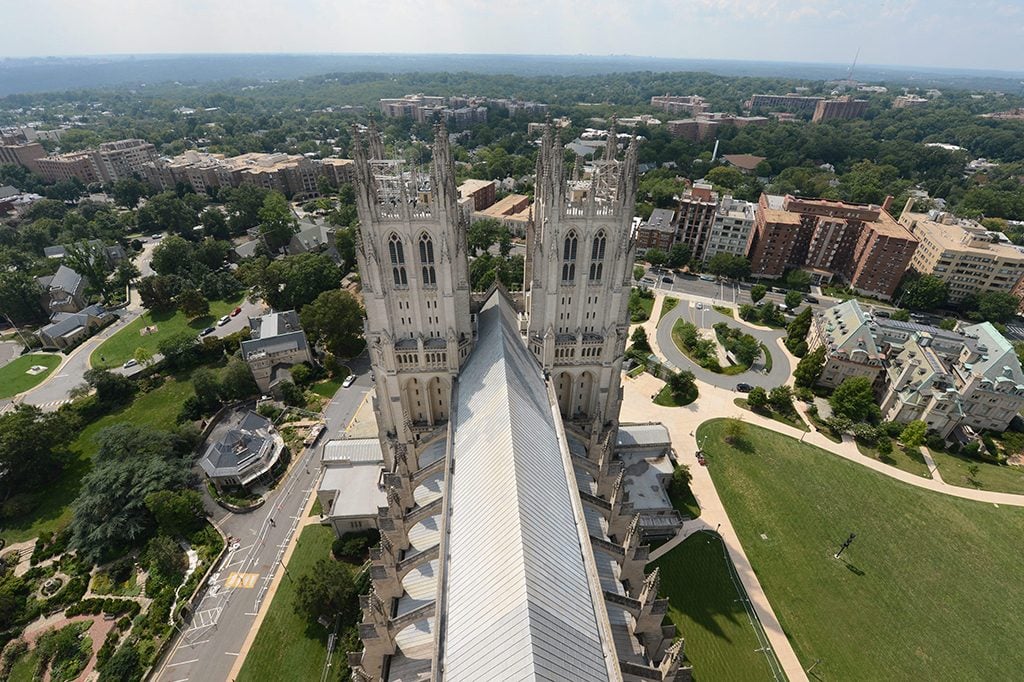
Where were you when the ground began to shake just before 2 pm on August 23, 2011? The East Coast’s strongest tremor in 67 years—likely felt by more people than any other quake in US history—injured few but caused hundreds of millions of dollars in damage. Interior repairs to Washington National Cathedral were finally finished in February of this year, with work on the limestone spires still pending.
This article appears in our December 2015 issue of Washingtonian.

